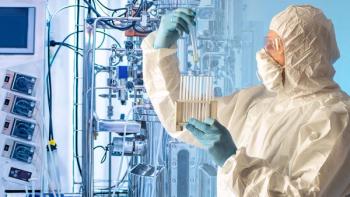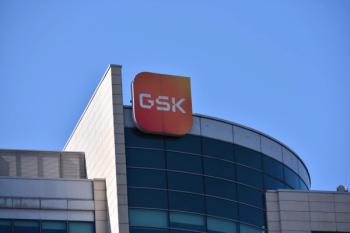
- BioPharm International-12-01-2007
- Volume 20
- Issue 12
China as a Biopharmaceutical Powerhouse: Just a Matter of Time
China's pharma industry represents 5% of the world total. By 2010, China is expected to become the world's fifth largest pharmaceutical market.
The 1,000 new cars that appear every day in Beijing every day symbolize rapidly rising incomes; but the resulting pressures on its weak infrastructure show up clearly in contrast: These cars cause so much pollution that Beijing will ban a third of its autos (one million cars) to clean up the air before next summer's Olympics. This situation might be a metaphor for the country's biopharmaceuticals industry: strong prospects, but weak infrastructure. Venture capital and intellectual property issues have gotten attention and appear en route to resolution; but serious gaps remain. Most would agree, however, that the question is not if China becomes a biopharmaceutical powerhouse, but when, and in which segments. Will it be R&D? Biosimilars? Manufacturing/outsourcing? Gene therapy?
Eric Langer
The Chinese government has already stated where it believes its biotech industry will be in the next 15 years: In August of this year, China's Minister of Science and Technology, Wang Gang, announced that the country is adopting a 15-year, three-stage strategy to develop its high-tech bio-economy and to create world-class science in biotechnology. According to the plan, by 2010 the country will emerge from a "technology accumulation" stage and move to an "industrialization" stage. The government is targeting nearly $400 billion in annual output from its biotechnology industries, and it sees the segment as a cornerstone of China's national economy by 2020.
Does China's recent progress suggest this is a reasonable possibility? The sheer size of the country's population creates great economic and political pressure to focus on healthcare policy, economics, and infrastructure to ensure the future well being of its citizens. The substantial long-range goals set by the Chinese leadership may be difficult to achieve, however, considering the other demands that are being placed on its economy.
Despite these problems, most life sciences companies worldwide are considering business strategies that include China. This article reviews developments in the last 12 months (from September 2006 to September 2007), as a way to assess how far China's biopharmaceutical industry has come and its prospects for the future.
A REVIEW OF THE STATISTICS
To assess the current situation in China's biopharmaceutical industry, it is worth reviewing the following statistics:
- China's gross domestic product (GDP) growth has been running at full bore (nearly 8% per year) since 2000.
- Its pharmaceutical industry represents 5% of the world total.
- Life sciences revenues in China grew 40% in 2005.
- By 2010, China is expected by many analysts to become the world's fifth largest pharmaceutical market.
- Pharmaceutical sales in China will likely exceed $24 billion by 2010.
- European and American bioscience companies are rapidly forming alliances, opening R&D facilities, planning for sales and marketing operations, and projecting large investments in China over the next 10 years.
- The number of bioventure deals in 2004 in Asia reached 3,200, matching the total of 3,300 for Europe and the US. The Chinese contribution to this number is increasing rapidly.
- Offshore IPOs for Chinese companies are picking up. This year, Simcere Pharmaceutical issued an NYSE IPO as a generics manufacturer, and 3SBio Inc. went public on the NASDAQ. Sinovac was the first Chinese biotech company to go public in 2004 (on the AMEX).
- Though nearly all of China's biologics are copies of Western inventions, China has developed more than 30 biotech drugs and has more than 150 in the pipeline. There are more than 200 Chinese biopharmaceutical companies, and numerous biogeneric drugs, including epoetin alpha and recombinant human granulocyte colony-stimulating factor, are legally manufactured in China.
- The growing technical experience of Chinese biotechnologists is demonstrated by the fact that that 20% of international, peer reviewed papers in life sciences have at least one Chinese national as an author.
PROBLEMS
Most would agree that serious problems exist, and the path of China's economic juggernaut is not unobstructed. China's pharmaceutical industry continues to experience serious, basic obstacles.
Its infrastructure to support quality, good manufacturing practices is underdeveloped by international standards, and its experienced, domestic biologics workforce is limited.
Venture capital is growing in China, but is not readily available, even for solid business opportunities. China also lacks a history of intellectual property protection, and, though it has come a long way, it still has legislative and cultural obstacles to overcome. Lastly, China's support for R&D is very low. It is currently 1.2% of GDP versus 2.7% for the US, according to 2004 figures, and in raw numbers, is 1/20th of US expenditures.
RECENT INDUSTRY DEVELOPMENTS
To paint a better picture of the situation, however, it is instructive to review developments in China in recent months.
Infrastructure and Business Climate
To Western observers, the most visible sign of China's biopharmaceutical growth is probably the increasing activity of foreign companies. In 2007, GlaxoSmithKline opened a $40-million drug research center in China, and expects its staff there will grow to 1,000 in next decade. Eli Lilly announced plans to invest $100 million on R&D in China over the next five years to expand its drug research capacity. Others foreign companies already involved in R&D in China include Novartis, AstraZeneca, Pfizer, and Roche. Foreign activity in China is not limited to Western companies, however. Daiichi Pharmaceutical (Beijing) has announced plans to promote sales of pharmaceutical products of its Japanese parent company in China.
Covance expanded its clinical research operations in China, with a central laboratory in Shanghai to strengthen its network of full-service central laboratories. Three other contract research organizations (Sundia, MediTech, United PharmTech, and HD BioSciences) formed a CRO Service Alliance (CROSA) in Shanghai. These activities may reflect the fact that China ranked first as the "most attractive" low cost outsourcing clinical trial location by AT Kearney. (India and Russia took second and third place, respectively.)
There have also been important deals between Chinese and foreign firms. One notable deal included a collaboration between the Danish Biotech Research and Innovation Center and the Shanghai Institute of Materia Medica on an anti-cancer drug. China Biopharma entered a deal to produce and distribute in China the immunotherapeutic vaccine staphage lysate (for staphylococcal infection), developed by the US-based Delmont Laboratories.
Funding for all this activity took a positive turn as Bio Veda, the first international venture capital fund focusing on life sciences investment in Shanghai, China, was formed.
New Drug Launches
Early-stage research is not the only area of China's biopharmaceutical industry that is showing growth. Ten major new drugs were launched to the Chinese market in 2006, half of which were developed domestically by Chinese companies.
The Chinese company Chengdu Hoist Inc., for example, received approval for a radioactive monoclonal antibody—iodine [131I] metuximab Injection. And China's first human H5N1 avian flu vaccine, developed by Sinovac Biotech Ltd. and China CDC, completed Phase 1 trials.
Foreign-made drugs also entered the Chinese market in the last year. Novartis's hepatitis drug, Sebivo, (being developed jointly by Novartis and US biotech Idenix Pharmaceuticals), received approval from China's State Food and Drug Administration (SFDA). Also, an HIV RT inhibitor in late preclinical development was licensed by the Swedish company Medivir to Guangdong Lantai Viewland Pharmaceutical. Wyeth also announced plans to enter the Chinese vaccine market with Prevnar, a pneumococcal vaccine.
Overall Numbers
The examples above are reflected in the annual output of China's biotech industry, which approached $130 million in 2006. China's medicine and health product imports and exports surpassed $30 billion in 2006, including biochemicals, traditional Chinese medicine, and medical devices.
Of course, the domestic industry still has a long way to go. China has 500 biotech enterprises, but a 15-year gap remains between the development of China's biopharmaceutical industry and that of developed countries. In 2006, 900 Chinese pharmaceutical companies stopped production as a result of severe competition, price pressures, and the implementation of regulatory and quality requirements. Forty percent of Chinese pharmaceutical companies claimed losses in 2006, and 60% of pharmaceutical profits in China flowed to wholly foreign-owned or Sino-foreign joint ventures.
In spite of that, China seems to feel that its domestic industry is strong enough that the country can reduce incentives for foreign firms. China announced it would unify corporate tax rates for domestic and foreign companies in 2008. Until now, foreign companies have paid only 20%, compared to 33% that domestic companies pay.
At the same time, however, the government continues to pour money into developing the industry. China announced plans to build the largest protein therapeutics production base, for BaiAo Pharm to produce 200 million capsules and 30 million injectable doses annually of lumbrokinase products. The provincial government in Tianjin announced plans to build the largest flu vaccine production facility in North China.
The Chinese government announced plans to build a dozen first-class biotech centers to provide platforms for the country's biotechnology industry. These will include 10–15 state laboratories, 30–35 national biotech engineering centers, 10–15 genetic R&D centers, 10–15 biotech innovation centers run according to international standards, 80–100 biotech companies, and 10–15 biotech parks and zones.
This government investment seems to be supported by private sector activity. For example, the Huayi Group announced plans to invest $13 million in a pilot project to manufacture "Yishengtai" (rh-YST active peptide), a diabetes medicine developed in China. Shanghai Kehua Bio-engineering Co. Ltd. began exporting HIV test kits through the Clinton Foundation. And a new anti-dementia drug based on traditional Chinese medicine (TCM) was licensed by the Chinese SFDA. This is the first patent licensing to a foreign firm. Beijing SL Pharma received approval from the SFDA to conduct clinical trials of a new genetically engineered medicine, recombinant candida utilis uricase.
Capital activity also showed positive signs. The Chinese diagnostic producer Chemclin completed its first private fundraising round, garnering $5 million in June. Simcere Pharma acquired Shandong Simcere Medgenn Bio-Pharmaceutical Co., through a an acquisition of an additional 10% shares for $3.6 million in cash. Benda Pharmaceutical, Inc., the producer of Gendicine, the world's first commercialized gene therapy medicine for cancer, increased its ownership stake in Shenzhen SiBiono Genetech Corp.
Improving Scientific Basis
China's biopharmaceutical industry is also showing signs of strengthening its scientific underpinnings. A number of examples can be cited to support this:
- The Shanghai-based National Center for Drug Screening bolstered its new drug research by hiring top Roche and Pfizer scientists as members of its scientific advisory panel.
- The world's first Helicobacter pylori vaccine completed Phase 3 trials in China. Five patents were granted for the Chinese-owned IP used to develop the drug.
- A new bird flu vaccine virus was developed through collaborative research by Chinese and American scientists at US and Chinese centers for disease control. The virus was isolated from people infected with the H5N1 strain.
- On the manufacturing side, a Sino-Cuban collaborative project created China's first automated large-scale mammalian cell culture platform.
CHANGING REGULATORY CLIMATE
The regulatory climate in China, a major concern in the West, is also showing signs of improvement. This year, China's SFDA issued long-awaited regulations on drug registration that (1) intensified requirements for drug safety; (2) integrated supervision resources and clarified responsibilities; and (3) enhanced drug evaluation and approval standards. China announced a new five-year plan to tighten food and drug safety and to contain illegal activities in production and the sale of shoddy pharmaceuticals and foods.
To implement the new regulations, China established a four-level drug administration and inspection system involving 3,509 institutions. The SFDA also announced plans to complete an express examination and approval process for new drugs, to encourage Chinese innovative new drug R&D.
The SFDA also enacted new regulations on drug oversight, including new regulations covering exhibitions, channels, cold chain transportation, quality, and other measures.
The government also began to crack down on government corruption. China executed the former SFDA head, Zheng Xiaoyu, in July for dereliction of duty and for taking $850,000 in bribes. Another former SFDA drug registration director was sentenced to death for corruption and dereliction of duty, though his sentence was suspended. The SFDA also banned staff from holding shares in pharmaceutical companies, and created a schedule for local drug administrations with commercial ventures to sever ties.
The crackdown extended to industry, as well. In one example, China's health officials investigated a case involving 1,200 instances of illegal medical advertising. Five medical institutions in Anhui Province were closed and the licenses of nine medical institutions were revoked.
The government revoked 353 licenses for therapeutics for various reasons, including quality, and rejected 3,049 applications for new drugs from August 2006 through February 2007. The SFDA also revoked GMP certificates for Guangdong Bioyee Pharmaceutical Co., due to violation of regulations involving its human immunoglobulin products.
China's SFDA also issued new GLP standards. As of January 2007, all new drug safety evaluations must be conducted in GLP-accredited laboratories. Only 23 laboratories in China are GLP certified.
Some companies are clearly rising to the occasion. SinoBiomed Inc.'s 2,500 square-meter recombinant human interferon GMP production plant in Shanghai has its Chinese GMP certification renewed by the SFDA. The generic drugmaker Zhejiang Huahai Pharmaceutical became the first Chinese manufacturer to pass US FDA inspections (the result of a $13 million, 5-year investment in an anti-AIDS drug).
A series of steps also show that Chinese regulators are paying more attention to drug safety. The SFDA suspended sales of three drugs—the Parkinson's drug Permax; methotrexate, used to treat acute leukemia and rheumatoid arthritis; and Novartis's Zelnorm—because of safety concerns. China's adverse drug reaction (ADR) reports reached a new high in 2006, with 369,392 ADR reports in 2006, up from 173,000 in 2005 and 70,050 in 2004. The higher numbers most likely indicate better reporting rather than actual increases.
INCREASED RESPECT FOR IP
In 2006, Pfizer won an intellectual property (IP) lawsuit for Viagra. As a result, two Chinese companies were required to compensate Pfizer $77,000 for infringing Pfizer's trademark. This suggests an increasing commitment in China to protect IP rights. The fact that the Chinese company involved had appealed the initial decision also indicates a newfound respect for rule of law.
SUMMARY
Predicting economic opportunities in China today remains a challenge. As we track trends and market shifts, we see that the bioscience industries remain a critical component of the economy. China is a centrally planned economy, so market forces are not the only guides. As the country balances its domestic programs with a shift toward a more market-based economy, it is difficult to judge accurately how these market opportunities will balance with current healthcare policies, its direction in life science education, and its economic investment programs. However, recent developments point to generally positive trends.
Eric Langer is president of BioPlan Associates, Rockville, MD, 301.921.9074,
Articles in this issue
about 18 years ago
Quality by Design in the CMO Environmentabout 18 years ago
Developing a Sound Process Validation Strategyabout 18 years ago
Has the Era of Blockbuster Drugs Come to an End?about 18 years ago
Taking a Closer Lookabout 18 years ago
Life Sciences and Socially Responsible InvestingNewsletter
Stay at the forefront of biopharmaceutical innovation—subscribe to BioPharm International for expert insights on drug development, manufacturing, compliance, and more.




